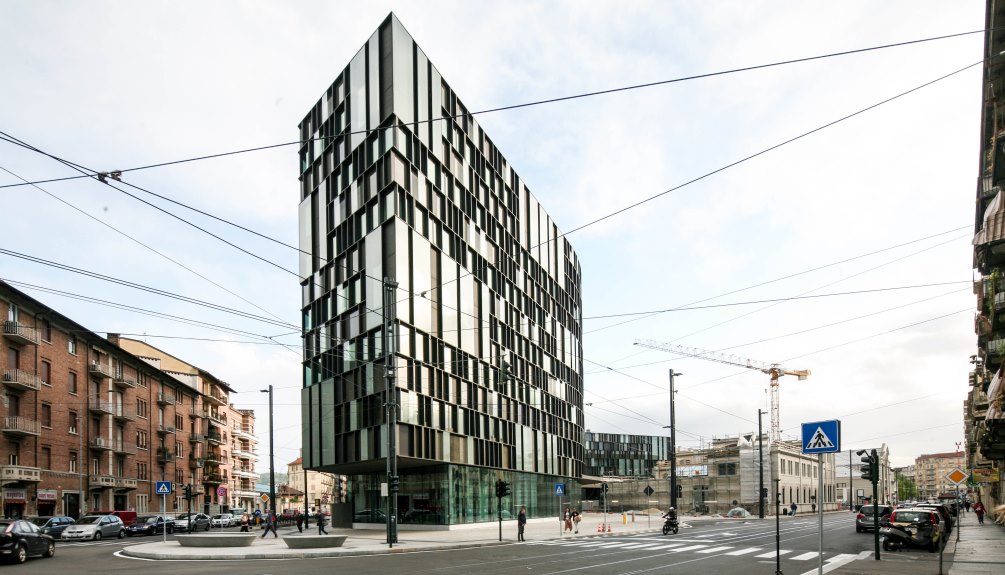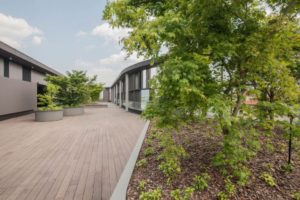Architect Cino Zucchi has designed Nuvola Lavazza as the new headquarters of the famous coffee company by redeveloping the disused area of the former Enel power station in Aurora district of Turin, Italy.
The large existing block between Via Bologna, Largo Brescia, Corso Palermo and Via Ancona has been redesigned and opened to the city, while the documented industrial architecture have been preserved.
The heart of the project is a new, expansive tree-planted piazza in the centre of the block positioned on the axis of Via Parma, which makes the large building of the former Enel power station enter into a dialogue with the new headquarters of Lavazza.
The office building, which communicates with the city through the extensive glazed atrium overlooking Via Bologna and the new green square, takes the form of a large “cloud“ which unites the different façades and the industrial buildings, which have been preserved and converted to new functions.
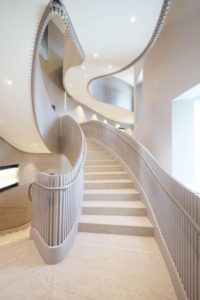 The ground floor, which houses activities characterized by a close relationship with the public, faces a number of “theme gardens“ which create a new green filter between the building and the city.
The ground floor, which houses activities characterized by a close relationship with the public, faces a number of “theme gardens“ which create a new green filter between the building and the city.
Zucchi’s goal was to repurpose the abandoned utility building into a large, flexible environment where creativity is produced, rather than electricity.
It’s certainly large: the Nuvola Lavazza (Lavazza Cloud) covers 30 thousand square meters. With its renovated exterior it gives a revitalizing new feel to the Aurora district. It’s just a stone’s throw from the historic company headquarters in Via San Tommaso 10, where Luigi Lavazza began his adventure as a coffee roaster 120 years ago.
Aurora, one of the largest and oldest working-class districts of Turin, has built—thanks in large part to this project—new urban regeneration momentum. In one fell swoop, the neighborhood has lost an ugly devitalizing dead space, and gained a beautiful, vital new place.
Cino Zucchi says his project is designed to inspire people, mobilize energy and trigger interaction, providing experiences of cultural, social, taste and business sharing. In addition to the company’s offices, it houses the Lavazza Museum, a bistro in collaboration with slow food and a gourmet restaurant designed together with the famous Catalan chef Ferran Adrià.
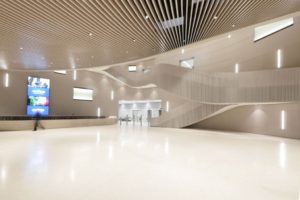 Besides the architecture, a new public square—Piazza Verde—has been created between Via Bologna, Via Ancona and Corso Palermo. A place open to the general public that contains, like an embrace, the various components of Nuvola: sustainable buildings, new buildings and old, fully-renovated facilities which retain their heart and soul; trees, plants and benches that welcome and accommodate.
Besides the architecture, a new public square—Piazza Verde—has been created between Via Bologna, Via Ancona and Corso Palermo. A place open to the general public that contains, like an embrace, the various components of Nuvola: sustainable buildings, new buildings and old, fully-renovated facilities which retain their heart and soul; trees, plants and benches that welcome and accommodate.
Social and environmental sustainability was one the major themes of Nuvola Lavazza and the design options adopted that aim at saving energy and resources mean it has been recognized with the highest environmental certification, namely LEED Platinum.
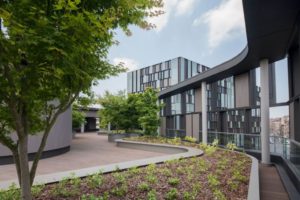 This sustainable approach also includes Lavazza’s decision to move to its new “Nuvola” premises, to sell the furnishings in the old office at symbolic prices, in order to relocate them and avoid waste and disposal that would have a negative impact on the environment.
This sustainable approach also includes Lavazza’s decision to move to its new “Nuvola” premises, to sell the furnishings in the old office at symbolic prices, in order to relocate them and avoid waste and disposal that would have a negative impact on the environment.
In general, Lavazza has been very attentive to the impact its actions can have on the territories of its operations. Hence, its Community Engagement program aimed at improving the social, cultural and environmental context of local communities.
In the case of the Aurora district, these cooperative relationships have led to a redevelopment project, “I Luoghi del Bello” (The Places of Beauty).
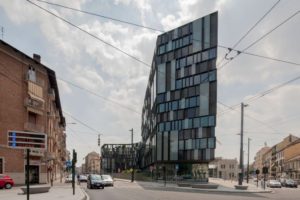 This initiative originated from their collaboration with the city’s District 7, in partnership with the ASAI, CleanUp, Tèkhné and Torino Spazio Pubblico associations.
This initiative originated from their collaboration with the city’s District 7, in partnership with the ASAI, CleanUp, Tèkhné and Torino Spazio Pubblico associations.
“I Luoghi del Bello” is a project that celebrates Lavazza’s roots in the community which it has been an integral part of since 1895.
The project involves citizens of different age groups, encouraging intergenerational encounters on environmental issues, social integration and fostering relations.
The main initiatives undertaken involved children from local schools, the elderly and volunteers from the various associations, who among the many projects carried out have also upgraded public flowerbeds by introducing botanical species suitable for colonising butterflies. An active contribution from an enlightened client aimed at improving the quality of urban life where even a small action can make a difference.
All images courtesy of Cino Zucchi Architetti.

